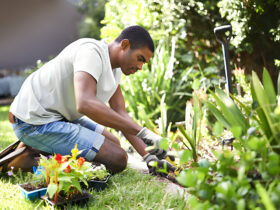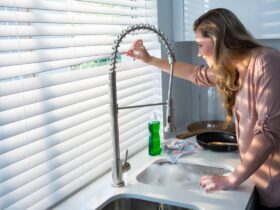Have you ever stood by the sink, wondering why water refuses to drain away? Or perhaps you’ve run into a clogged drain at the worst possible moment, leaving you feeling stressed and unsure of what to do next? These everyday annoyances can quickly become major headaches if ignored for too long. Fortunately, there are several simple techniques you can use at home to tackle blocked drains in Burleigh Waters.
We’ll also discuss various warning signs indicating a possible clog in your drainage system—think gurgling noises, slow-draining sinks, or unpleasant smells. By the end, you’ll have an in-depth understanding of blocked drains and how to clear them fast.
We’ll start by covering what typically causes drains to block and how to spot trouble before a drain becomes completely stopped up. From there, we’ll explore seven easily accessible DIY methods for clearing a blocked drainpipe, such as using baking soda and vinegar or employing a plunger. Along the way, we’ll address frequently asked questions like “How do you clear a blocked drain?” and highlight steps to help you avoid future blockages in Burleigh Waters. Let’s dive in!
Understanding the Causes of Drain Blockages
Most drainage issues don’t appear out of the blue. They tend to build up slowly over time, often triggered by everyday habits that we might not question until the water flow stops. Blocked drains can crop up in kitchens, bathrooms, and even in outdoor areas. By learning what factors contribute to clogged drains, you can stop a minor sink blockage from graduating into a plumbing disaster.
1. Kitchen Sink Blockages vs. Bathroom Blockages
Kitchen sink blockages often stem from hardened grease, oils, and food scraps. When you’re rinsing plates or washing pots and pans, small bits of food can slip down the drain, then combine with cooled grease. Over time, this mixture forms a stubborn coating inside the pipes that slows water flow, eventually creating a blocked drain.
Bathroom blockages are a little different. Hair, soap scum, and product residue—like thick shower gels or lotions—tend to build up along bathroom drains. If you’ve noticed water gathering around your feet during a shower or taking ages to swirl away in your sink, you may well have a partial clog forming behind the scenes.
2. External Factors: Outdoor Drains and Driveway Gutters
Drains don’t only block indoors. Outdoor drains can become obstructed by leaves, dirt, and even small rocks. In Burleigh Waters, heavy rainfall can wash debris straight into driveway gutters and outdoor drains. If these areas aren’t cleared regularly, water can pool in your yard, or you could find that your stormwater drainage fails when you need it most. Ensuring these external drains stay free of leaves and dirt helps prevent blockages from creeping into your home’s main drain network.
3. Accumulation of Hair, Grease, and Other Debris
Whether it’s a kitchen or bathroom, hair, grease, and general debris can work against your plumbing. Think hair strands collecting around the plughole, or grease coating the inside of drainpipes over long periods. Even seemingly harmless items like coffee grounds or eggshells can contribute to a clogged drainpipe. Once the inner circumference of a pipe narrows, the flow of water is restricted, increasing the risk of more debris snaring on the edges. If left unanswered, what was just a minor sink blockage can transform into a fully blocked drain.
Top 7 DIY Solutions for Blocked Drains
You’ve noticed slow drainage or an unpleasant smell—now what? Fortunately, you have plenty of DIY approaches to try before calling a professional. While some of these options require simple kitchen staples, others make use of commonly available plumbing tools. Look at our top seven ways to unblock sink drains at home.
1. Hot Water Flush: Does It Really Work?
A hot water flush is often the first step in dealing with a clogged drain or a sink that’s draining sluggishly. Boil a kettle of water and carefully pour it down the drain in stages, giving it time to work through the blockage. This approach can help dissolve or soften some grease and soap scum lurking within your pipes. If you hear water slowly trickling away rather than backing up, keep pouring more hot water until the flow improves.
While this may not always shift a stubborn clog, it’s a quick, cost-free first step. Instead, add hot water in smaller intervals to avoid potential warping. If the water drains away faster each time, you may already be on course to clear blocked drainage successfully.
2. Using a Plunger: How Unblock a Drain with Suction Techniques
Plungers are one of the easiest and most effective ways to tackle a blocked drain. To use one:
- Fill the sink or bathtub with just enough water to cover the plunger head.
- Position the plunger over the drain opening so you create a good seal.
- Use quick, firm thrusts to move water back and forth within the pipe.
- Release the plunger occasionally to see if the water drains away.
When there’s a complete seal and steady pumping action, a plunger can dislodge many types of clogs. Keep in mind that if you’re dealing with a kitchen sink that has two drains or a bathroom sink with an overflow, you might need to block the second opening with a wet cloth. That helps focus all suction on the blocked drain. If you notice the water level receding and then draining smoothly, you’ve managed to unblock the drain successfully.
3. Baking Soda and Vinegar: Natural Ways to Clear a Blocked Drain
If plunging your clogged drain hasn’t worked, a mixture of baking soda and vinegar is a natural alternative to commercial cleaners. The combination will fizz, helping break down minor blockages.
After the mixture settles, pour hot water down the drain to see if the flow improves. In addition to being an eco-friendly method for clearing a blocked drain, this solution can help manage mild odours caused by small bits of debris or organic buildup. You can use this approach regularly as a maintenance strategy to keep your drains fresh and clear—handy for preventing future clogging episodes.
4. DIY Drain Snake: Clearing a Blocked Drain with Basic Tools
A drain snake, sometimes referred to as a plumber’s auger, is an essential piece of kit for tackling more persistent blockages. If you don’t own one, you can improvise using a coat hanger by straightening it out and bending a small hook at one end.
You might find clumps of hair or food scraps latch onto the hook as you pull it out. Clear away any removed debris so it doesn’t slide back down the pipe. Repeating the process a few times may be needed to fully clear blocked drains. This method is especially effective in bathrooms where hair is the main culprit.

5. Commercial Drain Cleaners: Safe Usage and Tips
Sometimes a tough clog needs a more potent approach. Commercial drain cleaners, available at most supermarkets, are formulated to dissolve hair, grease, and soap scum. However, it’s vital to read and follow the product instructions carefully. These chemical cleaners can be harsh and using them incorrectly may damage certain types of pipes or pose health risks due to fumes.
- Wear gloves and eye protection.
- Keep the area ventilated.
- Don’t mix multiple drain cleaners at once.
- Advise anyone else in your household that a chemical cleaner is in use.
If you’re uncertain about the compatibility of a chemical cleaner and your pipe material, it might be wiser to try a more natural method first or consult a plumber if the clog persists.
6. High-Pressure Water Blast: How to Clear a Blocked Drainpipe Effectively
If normal plungers and cleaners haven’t fixed your drainpipe clogged problem, you can consider a high-pressure water blast. This approach is generally carried out using specialised equipment, but lower-pressure versions can be found in home stores. High-pressure water effectively dislodges stubborn debris like grease, hair, or even small tree roots that have broken into external pipes.
Attach your high-pressure hose attachment and direct a powerful stream of water down the drain. Wear protective clothing to shield yourself from backsplash. If water flows freely after a couple of seconds, that’s a sign you’ve managed to break through the blockage. Just be careful not to use too much force on older or fragile pipes, as excessive pressure can cause damage.
7. Enzyme-Based Formulas: Easy Methods for Unblocking Sink Drains
Enzyme-based drain cleaners are often seen as a gentler alternative to harsh chemical cleaners. They use naturally occurring bacteria or enzymes to break down organic waste, such as food remnants and hair. While they may take a bit longer to work than heavy-duty chemicals, enzyme formulas are less likely to corrode your pipes.
To use an enzyme-based cleaner, follow the instructions on the bottle: you’ll typically pour a certain amount down the drain and allow it to sit for several hours or overnight. Then, flush with water to remove any lingering clogs. This method can be repeated as a maintenance strategy—especially handy in kitchens where grease buildup is common.
Conclusion
Clearing blocked drains doesn’t have to be a nightmare if you know where to begin. We’ve looked at everything from hot water flushes and plungers to enzyme-based formulas and commercial drain cleaners. Each of these DIY solutions can resolve a range of clogs, and many of them are easy to carry out with items you probably already have at home.
If you’ve tried unblocking a sink multiple times without success, or the blockage returns shortly after clearing it, don’t hesitate to consult a professional. Persistent clogs can indicate more serious plumbing problems lurking out of sight. With the right blend of DIY maintenance and expert guidance, you’ll keep your drains flowing freely in Burleigh Waters. By being proactive, you’re ensuring a cleaner, healthier home for yourself and your family.










Leave a Review